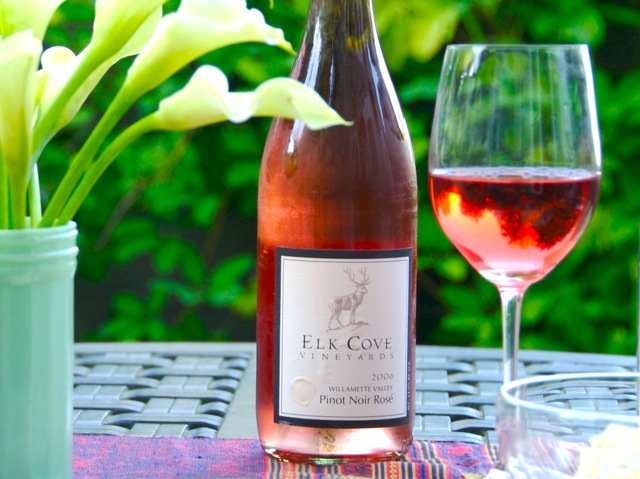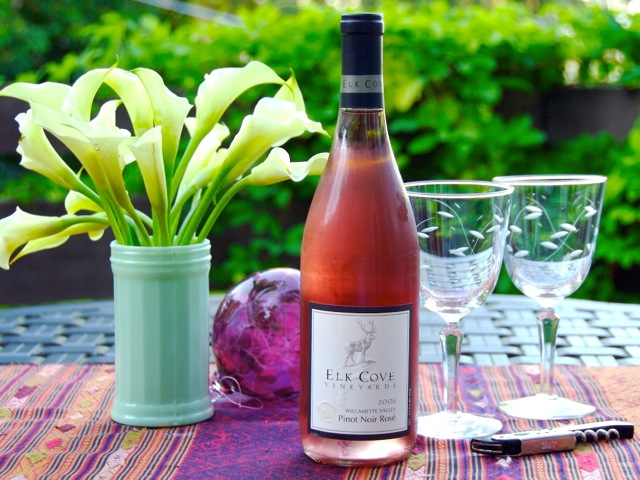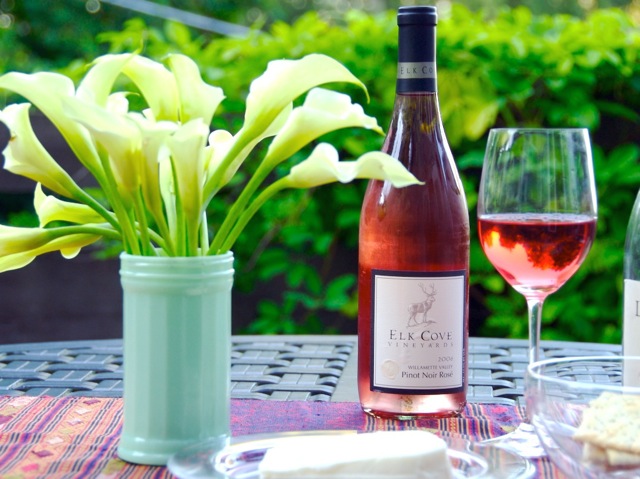
glass, l
(article, Bruce Bauer)
[%pageBreakSettings nobreak=true][%adInjectionSettings noInject=true] When the New York Times published an article on rosés last summer, you knew their time had come. For too long, the reputation of these wines had been sullied — often with good reason — by those luridly pink, sickly sweet, insipidly blah bottles of “white zinfandel.” Today there are many more rosés available — from France, Italy, Australia, and the United States — and they’ve claimed their rightful and delicious place among spring and summer wines. [[block(sidebar). h1. Featured recipes]] (Actually, victims of white zinfandel have been consuming a rather recent invention. In the late 1960s and early 1970s, lots of red zinfandel grapes were planted in California, adding to the zinfandel grapes that had been there for decades. However, by the time they matured there wasn’t much interest in them. The resulting juice glut was funneled into the cheap party beverage known as white zinfandel. For those of us who sell what I refer to as “real” zinfandel — those all-American bottles of big, jammy California red — the damage from that misguided inspiration has taken years to reverse.) [%image glass float=right width=300 credit="Photo © Culinate" caption="Rosy reflections."] Many Americans don’t realize that in the wine-growing regions of France, Italy, and Spain, rosés have long been not only accepted, but celebrated — the harbingers of warm weather and outdoor dining in the months to come. Come April and May, just as the farms and vineyards are starting to burst with fresh growth, the beautifully pink rosés that have been quietly fermenting from the previous year’s harvest are ready for release. A little explanation: Rosé is not made from pink wine grapes. Rosé is made from the same red wine grapes that go into your favorite bottles of syrah, pinot noir, cabernet, etc. The difference in color lies in how much contact the skin has with the juice. Once the grapes are pressed, the juice is put into tanks to ferment with the skins. The winemaker then separates the juice from the skins before the skin pigment imparts too much color. [[block(sidebar). h1. Good wine finds [[block(smalltext). 2006 Commanderie de la Bargemone “Coteaux d’Aix en Provence” Rosé ($13.95). Made from syrah and grenache, with a bright strawberry-and-spice flavor, this wine has a classically light, salmon-pink color. 2006 Elk Cove Vineyards Pinot Noir Rosé “Willamette Valley” ($13.95). Whiffs of fresh flowers, followed by flavors of cherry, strawberry, and violets. Crisp, with a nice medium body. 2006 Marques de Caceres Rioja Rosé ($8.95). Made from 100 percent tempranillo, this ruby-colored wine is vibrant and fresh with berries and hints of earth and spice. ]] ]] The varying house styles of particular producers explains the wide range of rosé shades, from a true blush of pink to strawberry-soda red. The color of a particular rosé doesn’t necessarily have anything to do with its body or intensity of flavor; I’ve drunk delicately pale pink bottles from the south of France that have all the flavor and character of more darkly colored Italian rosatos. Fortunately, despite all those varying colors and intensities, rosé is a remarkably versatile wine for pairing with food. In fact, perhaps no other wine goes with so many different kinds of dishes as rosé. Need a nice, easy-to-drink aperitif? Maybe something to go with a first course of shrimp or fish? Wondering what to serve with those sausages and veggies hissing on the grill? Think you need three different bottles of wine in various colors to work your way through a multi-course outdoor feast? Think rosé. A cold (and I prefer my rosés ice-cold) bottle of rosé has enough acidity to match up perfectly with appetizers without overwhelming them. And since a rosé is technically a red wine, a good one will offer plenty of body and texture to complement virtually anything grilled. The above-mentioned sausages and grilled vegetables, salmon, burgers, pizza, and even steak will get along famously with a quality bottle of the pink stuff. Which brings us to the million-dollar (or in the case of a good rosé, the $10-to-$20) question: “What do I look for when buying rosé?” Assuming that you trust your regular wine seller, the best thing to do is ask. If you’re on your own, here are a few general guidelines: # The rosés from Europe are virtually always dry, well-made wines. Generally, they are lighter in color than their New World counterparts, but to me tend to have more interesting flavors and better acidity, with acid being the key to pairing wine with food. My favorites are the classic syrah-grenache blends from the Rhône Valley, Provence, and southwest France. # American and Australian rosés are a bit trickier. Like most New World wines, they tend to be more straightforward and one-dimensional. That said, there a few savvy souls from California and Oregon making delicious dry rosé from syrah, grenache, and pinot noir. # If you’re paying more than $20 a bottle, you’re paying too much. You can get excellent bottles for around $10, and some truly outstanding examples for $15 to $20. Save the big bucks for the serious reds and whites. Rosé is all about immediate pleasure, not cellaring. These wines are meant to be slurped, shared, and enjoyed! p(bio). Bruce Bauer is the proprietor of the Portland, Oregon, wine shop Vino. He also keeps a blog called Eat. Drink. Think. Also on Culinate: A review of a book about pairing wine with food.

glass, l

feature-image, l

promo-image, l

featurette-image, l

reference-image, l